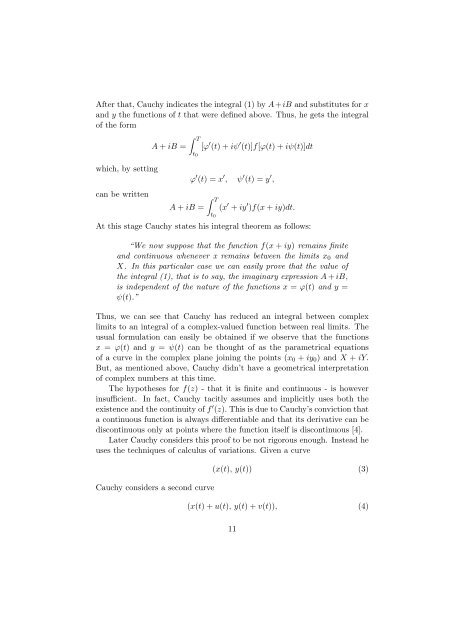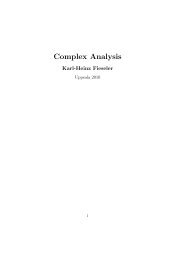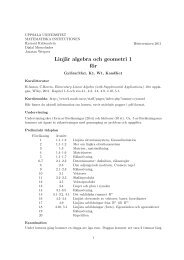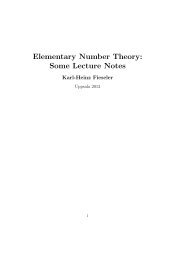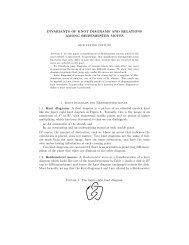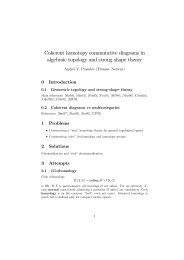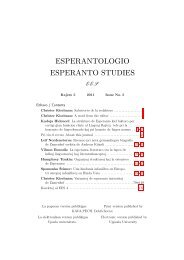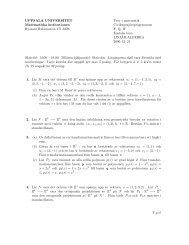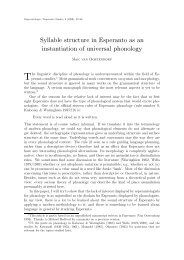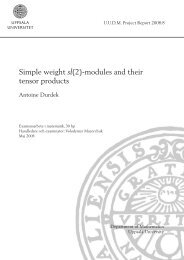Malmsten's Proof of the Integral Theorem
Malmsten's Proof of the Integral Theorem
Malmsten's Proof of the Integral Theorem
- No tags were found...
Create successful ePaper yourself
Turn your PDF publications into a flip-book with our unique Google optimized e-Paper software.
After that, Cauchy indicates <strong>the</strong> integral (1) by A+iB and substitutes for xand y <strong>the</strong> functions <strong>of</strong> t that were defined above. Thus, he gets <strong>the</strong> integral<strong>of</strong> <strong>the</strong> formwhich, by settingcan be writtenA + iB =∫ TA + iB =t 0[ϕ ′ (t) + iψ ′ (t)]f[ϕ(t) + iψ(t)]dtϕ ′ (t) = x ′ , ψ ′ (t) = y ′ ,∫ Tt 0(x ′ + iy ′ )f(x + iy)dt.At this stage Cauchy states his integral <strong>the</strong>orem as follows:“We now suppose that <strong>the</strong> function f(x + iy) remains finiteand continuous whenever x remains between <strong>the</strong> limits x 0 andX. In this particular case we can easily prove that <strong>the</strong> value <strong>of</strong><strong>the</strong> integral (1), that is to say, <strong>the</strong> imaginary expression A + iB,is independent <strong>of</strong> <strong>the</strong> nature <strong>of</strong> <strong>the</strong> functions x = ϕ(t) and y =ψ(t).”Thus, we can see that Cauchy has reduced an integral between complexlimits to an integral <strong>of</strong> a complex-valued function between real limits. Theusual formulation can easily be obtained if we observe that <strong>the</strong> functionsx = ϕ(t) and y = ψ(t) can be thought <strong>of</strong> as <strong>the</strong> parametrical equations<strong>of</strong> a curve in <strong>the</strong> complex plane joining <strong>the</strong> points (x 0 + iy 0 ) and X + iY.But, as mentioned above, Cauchy didn’t have a geometrical interpretation<strong>of</strong> complex numbers at this time.The hypo<strong>the</strong>ses for f(z) - that it is finite and continuous - is howeverinsufficient. In fact, Cauchy tacitly assumes and implicitly uses both <strong>the</strong>existence and <strong>the</strong> continuity <strong>of</strong> f ′ (z). This is due to Cauchy’s conviction thata continuous function is always differentiable and that its derivative can bediscontinuous only at points where <strong>the</strong> function itself is discontinuous [4].Later Cauchy considers this pro<strong>of</strong> to be not rigorous enough. Instead heuses <strong>the</strong> techniques <strong>of</strong> calculus <strong>of</strong> variations. Given a curveCauchy considers a second curve(x(t), y(t)) (3)(x(t) + u(t), y(t) + v(t)), (4)11


